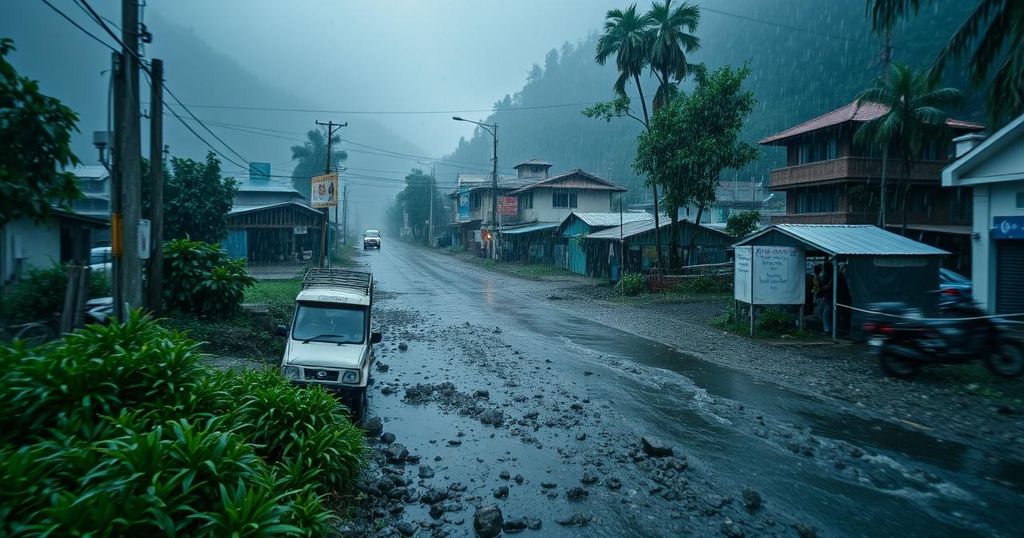Impact of Climate Change on Intensity of Nepal’s Flooding

Researchers have concluded that human-caused climate change aggravated the recent floods in Nepal, which claimed over 240 lives. The floods resulted from extreme rainfall that was found to be 10 percent more intense due to climate change. Experts advocate for urban planning reforms to mitigate future flood risks in vulnerable areas such as Kathmandu.
A team of leading scientists has determined that human-induced climate change significantly contributed to the intensity of the rainfall that resulted in devastating floods in Nepal last September. Specifically, their analysis reveals that the heavy rains experienced during this period were approximately 10 percent more intense due to climate change. The precipitation, which began on September 26 and lasted for three days, led to massive flooding and landslides, resulting in over 240 fatalities and severe destruction across central and eastern Nepal. The World Weather Attribution (WWA) initiative, a consortium of global scientists analyzing the effect of climate change on extreme weather phenomena, highlighted the necessity for Nepali officials to impose restrictions on development in flood-prone, low-lying areas. The sudden inundation particularly affected the Kathmandu Valley, where witnesses described unprecedented floods that caused significant casualties and property damage valiant into billions of rupees. The findings emphasize a critical need for urban planning reforms in Kathmandu, a city that has expanded rapidly in recent years around the Bagmati River. The study advocates for enhanced early warning systems and prompt emergency response strategies to mitigate future flooding risks. Approximately 20 researchers participated in this comprehensive study, including contributors from renowned institutions across Nepal, India, Sweden, the United States, and the United Kingdom. The research underscores Asia’s increasing vulnerability to extreme rain events, noting similar patterns of climate change-related flooding in several countries, including India and China, in 2024.
Nepal has faced an increasing number of extreme weather events linked to climate change, prompting discussions on the necessity for urban planning and disaster management strategies. The floods in September 2023 serve as a significant case study for understanding the direct impacts of human activity on weather patterns, particularly in regions susceptible to natural disasters. This scientific inquiry reflects a broader global concern regarding the implications of climate change, as intensifying weather contributes to devastating humanitarian impacts.
In summary, the analysis conducted by World Weather Attribution highlights the critical role of human-induced climate change in exacerbating rainfall intensity in Nepal, leading to catastrophic flooding events. The need for strategic urban planning and improved disaster mitigation practices is paramount for protecting vulnerable populations against future flooding disasters. The findings also illustrate the broader implications of increasing climate-related risks across Asia, necessitating immediate action from governments and communities.
Original Source: theprint.in






